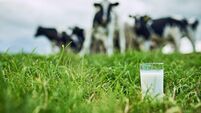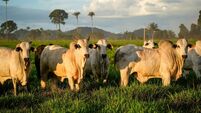Sweet idea could see baby formula with anti-infective properties
A study by FHI researchers at Teagasc Food Research Centre, Moorepark, Co Cork, is highlighting cow’s milk as a potentially suitable source of oligosaccharides (or ‘milk sugars’) for use as functional ingredients in infant formula. These sugars are in higher concentrations in human milk, so future trials will seek to replicate this balance in infant formula.
“The industry response so far has been very positive,” said Rita Hickey, senior research officer with Teagasc, Moorepark. “This is phase two research, and we’re hoping to conduct higher level studies that would move us towards clinical trials.
“We have a process for enriching the oligosaccharides, and are looking to optimise our method with the help of my colleague Phil Kelly so that commercial companies can use it in their facilities. That commercial stage will take at least another two years.”
FHI’s industry partners in these trials include Carbery, Dairygold, Kerry Group, Glanbia and the Irish Dairy Board. Apart from Teagasc, other research institutes involved in Food for Health Ireland include UCD, DCU, UCC, UL, NUIM and NUIG.
A total of €21m has been made available for the consortium, which researches a diverse range of topics, including appetite modulation, performance nutrition and healthy ageing, diabetes and healthy cheeses.
The global infant formula market is worth around €6bn annually.
Oligosaccharides in human breast milk are linked to health-promoting functions such as prebiotic activity, defending infants against bacterial and viral infections.
While the FHI study supports the health sector’s promotion of human breast milk as a preferred choice, breastfeeding is not always possible, or an informed decision may be made not to breastfeed.
These trials may lead to the development of enhanced infant formulae, enriched with extra concentrated bovine milk sugars which are similar to the sugars in human milk. The FHI team’s progress to date has already boosted Ireland’s reputation in this lucrative field.
“The breast-fed infant receives over 200 different types of sugar, which help them in many different ways,” explained Ms Hickey. “Babies are born without some important bacteria, which they receive through feeding.
“It is important that their gut becomes colonised by good bacteria, such as bifidobacteria.
“Human milk oligosaccharides prevent infection by bad bacteria. They also add to the infant’s immune functions. These anti-infective properties are what we’re most interested in.”
In effect, the ‘milk sugars’ act almost like decoys that bad bacteria can attach to instead of human cells. As a result, these bacteria get safely washed out of the body.
Little was known about these sugars until relatively recently, when groups in the US and Germany began studying their prebiotic properties.
Teagasc has made significant progress since 2007, the year in which Ms Hickey began targeted research in this area.
The group — made up of Ms Hickey, Jonathan Lane, Mariarosaria Marotta and JT Ryan — is conducting related trials on a range of infection-causing bacteria, such as campylobacter and pseudomonas.
Future FHI trials will continue to seek to enhance infant formula by boosting concentrations of oligosaccharides, sourced from whey and other dairy streams.









